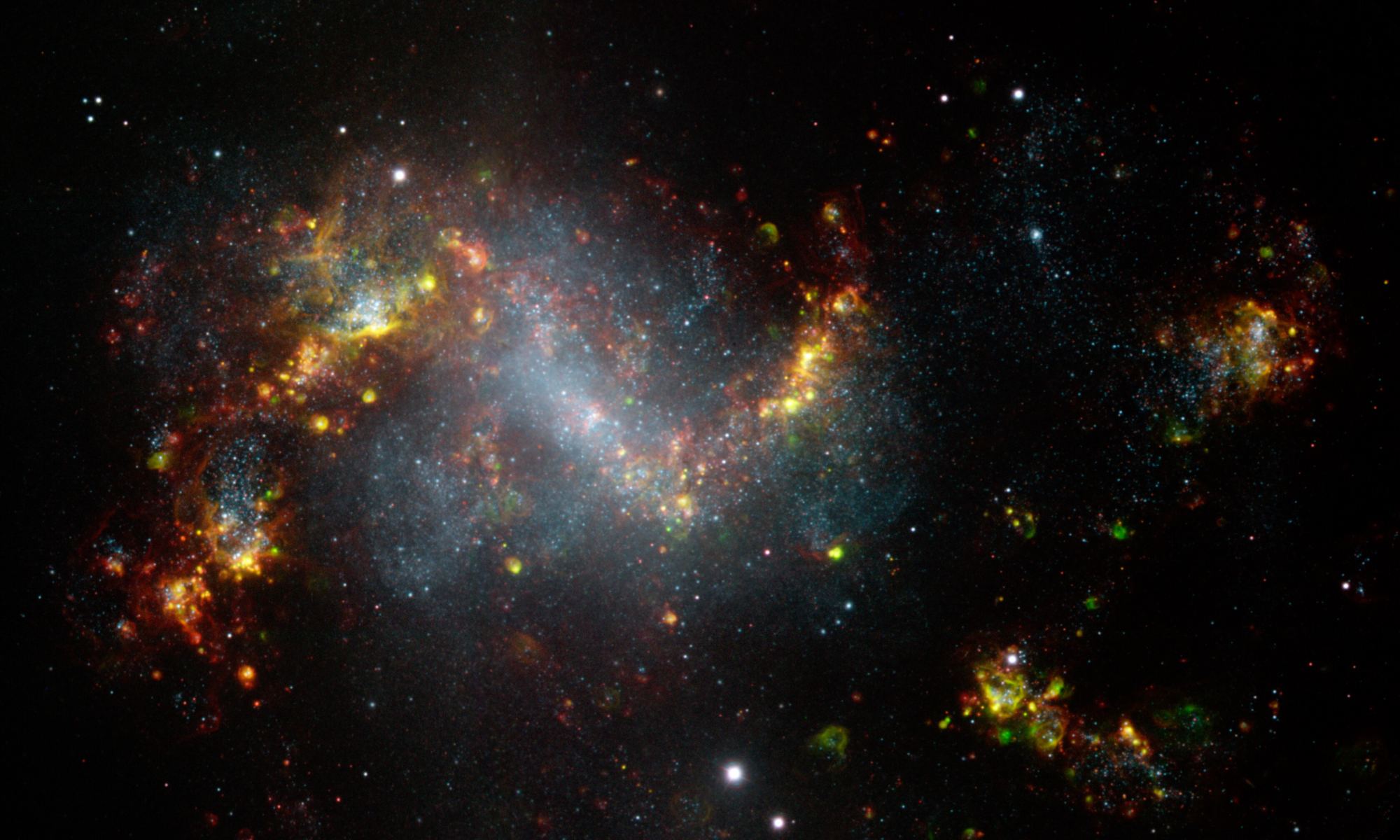Although the exact nature of dark matter continues to elude astronomers, we have gained some understanding of its general physical properties. We know how it clusters around galaxies, how it makes up much of the matter in the Universe, and even how it can interact with itself. Now a new study looks at just how fast dark matter can move.
The study focuses on an effect known as dynamical friction. The term is a bit of a misnomer since it isn’t the kind of friction you see between two objects sliding against each other. A better term for the effect might be gravitational drag. It was first studied by Subrahmanyan Chandrasekhar in 1943, and it’s caused by the gravitational interactions of a diffuse body.
Imagine a massive star moving through a cluster of red dwarf stars. Even though none of the stars are likely to collide, the gravitational interactions between them will affect stellar motions. The massive star will slow down as it leaves the cluster thanks to the gravitational tug of the red dwarf stars. On the other hand, the red dwarf stars will speed up a bit as they are dragged slightly toward the massive star. If you track the change in speed of the stars in the cluster, you can determine how fast the cluster was moving before the collision.

The same effect can occur between matter and dark matter. The presence of dark matter affects the motion of stars in the galaxy, and thanks to dynamical friction this distorts the shape of the galaxy. By mapping how the galaxy is distorted the team can calculate the motion of dark matter near the galaxy. So the team focused on finding distorted galaxies that aren’t part of a dense galactic cluster. Since the galaxies are fairly isolated, the distortion must occur because of dark matter.
The authors then compared the shape of these distorted galaxies to N-body simulations to map the motion of dark matter. One of the concerns they had was that the uncertainty in the data would be too large to make any meaningful constraints on dark matter. The team showed that for available samples, the data scatter is only about 10%. This means it is precise enough to apply to nearby galaxies. For example, detailed Gaia observations of the Large Magellanic Cloud should allow astronomers to get a handle on dark matter speeds there.
This approach gives astronomers one more tool for the study of dark matter. As future observations allow us to pin down the properties of dark matter, we may be able to determine what dark matter really is.
Reference: Kipper, Rain, et al. “Back to the present: A general treatment for the tidal field from the wake of dynamical friction.” Astronomy & Astrophysics 680 (2023): A91.


Thanks for bringing this to the readership attention!
Re the title, from Wikipedia:
“As a black hole passes a star, the gravitational slingshot accelerates the star while decelerating the black hole.
This slows the [supermassive] black holes enough that they form a bound binary system, and further dynamical friction steals orbital energy from the pair until they are orbiting within a few parsecs of each other. However, this process also ejects matter from the orbital path, and as the orbits shrink, the volume of space the black holes pass through reduces, until there is so little matter remaining that it could not cause a merger within the age of the universe.
Gravitational waves can cause significant loss of orbital energy, but not until the separation shrinks to a much smaller value, roughly 0.01–0.001 parsec.
Nonetheless, supermassive black holes appear to have merged, and what appears to be a pair in this intermediate range has been observed in PKS 1302-102. The question of how this happens is the “final-parsec problem”.”
Dark matter clumps to the rescue!? We’ll have to do more observations and see. (Annoyingly the paper doesn’t mention any application to this problem. Also meaning it took Brian Koberlein to put it together!)